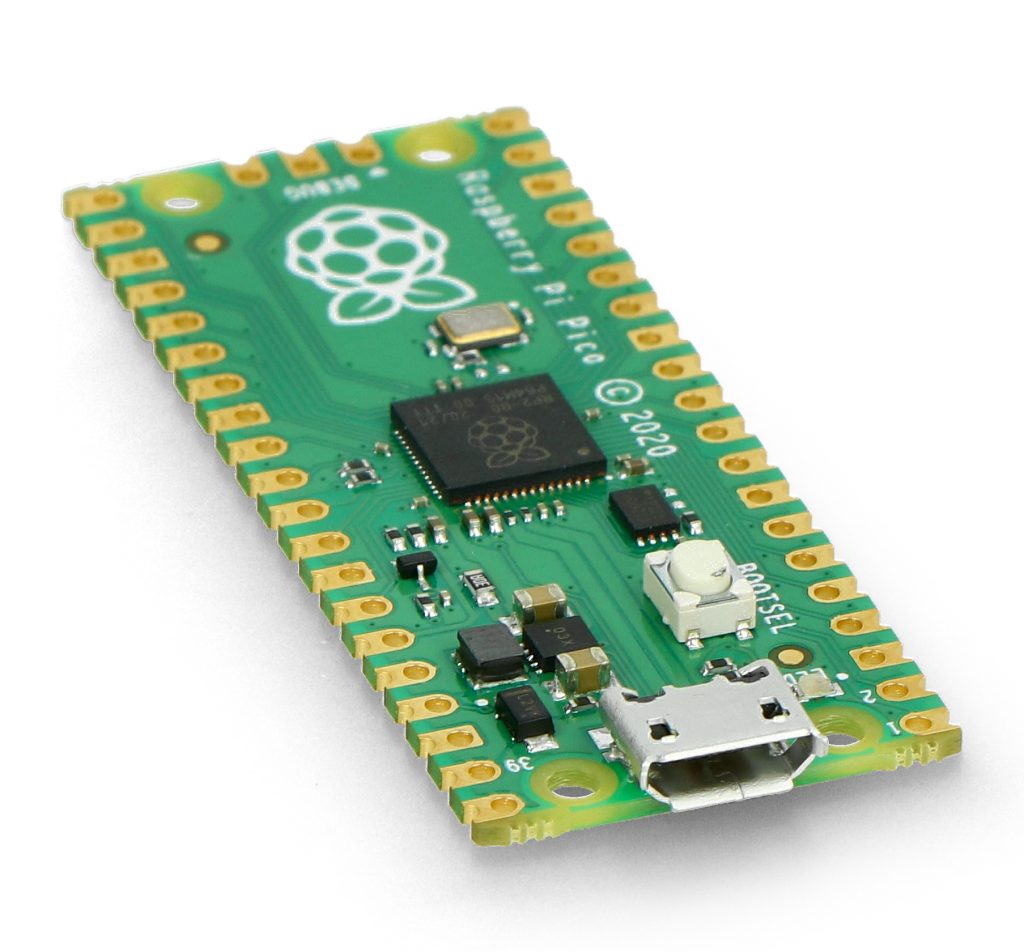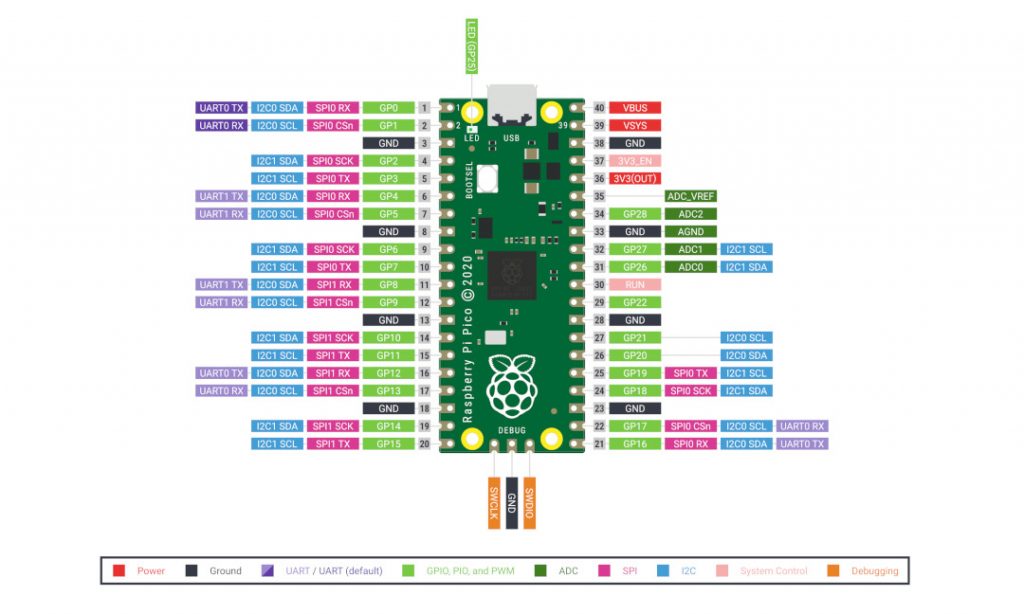Table of Contents:
The Raspberry Pi Foundation from UK is not slowing down the tempo. With the new year, we get another Raspberry Pi novelty to sweeten the wait for the RPi 5 model.

Raspberries… and premieres
Year 2020 was truly a Raspberry Pi year. News coming from The Islands spoiled not only Botland, but also the whole community of fans of the world’s most popular minicomputer. It seems, in retrospect, easier to pinpoint the idea behind the news from Raspberry Pi.

As official Raspberry Pi distributor in Poland we have announced CM4 – Raspberry Pi Compute Module with industrial applications in mind, and the ever-popular Raspberry Pi 400 in the style of the Atari classics, associated primarily with cool design and consumer applications. Both propositions have already generated a lot of interest in Poland – we must admit that the demand has exceeded even our expectations. You can find our articles in Polish below.
Raspberry Pi Pico!
And what’s so tiny?
Raspberry Pi Pico is a really small module with a proprietary RP2040 microcontroller. It’s made in the UK. Assisting dual-core chip is based on ARM Cortex M0+ clocked at 133 MHz. The memory is not a shocking amount, but for certain applications it is just right – 264 kB of SRAM on board and 2 MB of Flash memory. It is an inexpensive and slightly less complex alternative to full-fledged minicomputers and other multifunctional boards.
And whole thing measures just 51 mm x 21 mm in total.

Pinouts and power supply for Raspberry Pi Pico
Among the 26 GPIO pins are:
- 2 x SPI
- 2 x I2C
- 3 x UART
- ADC 12-bit
- 16x PWM
+ additional 8 leads can be used to connect custom peripherals.
Power and communication for the Raspberry Pi Pico are provided via a microUSB connector. 5V power supply is required for operation. The board can also be powered from the VSYS pin with a voltage ranging from 1.8V to 5.5V. You will then need either a 1.7V Li-Pol battery or three AA batteries. The logic part of the Raspberry Pi Pico, on the other hand, operates at 3.3V.
Pico programming in C/C++ and MicroPython
Pico can be programmed in C++ or MicroPython. It is worth taking a look at the product page, where we have described the whole process for you and provided it with clear GIFs. The animations and instructions will help even those who are resistant to coding knowledge and those who are still unfamiliar with Python – and it’s not as bad as they say it is!

We’ve covered the first steps with the tiny Pico for you in the context of MicroPython as well as C and C++. In addition, Raspberry Pi provides us with a Software Development Kit (SDK) repository for C programming language.
Need help?
Please visit the product page where you can find the full specifications and small programming guide described above. And if the animations and the short tutorial don’t satisfy you, the manufacturer has also offered an official guide in English Get Started with MicroPython on Raspberry Pi Pico, which was released in the wake of the launch and will be with us soon.
Official manual includes not only newbie-friendly instructions for connecting the modules, but also a model description of sample programs that have been created with the MicroPython language.

Botland.store is Raspberry Pi approved retailer in Poland.
How useful was this post?
Click on a star to rate it!
Average rating 0 / 5. Vote count: 0
No votes so far! Be the first to rate this post.






















